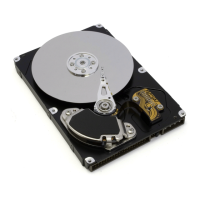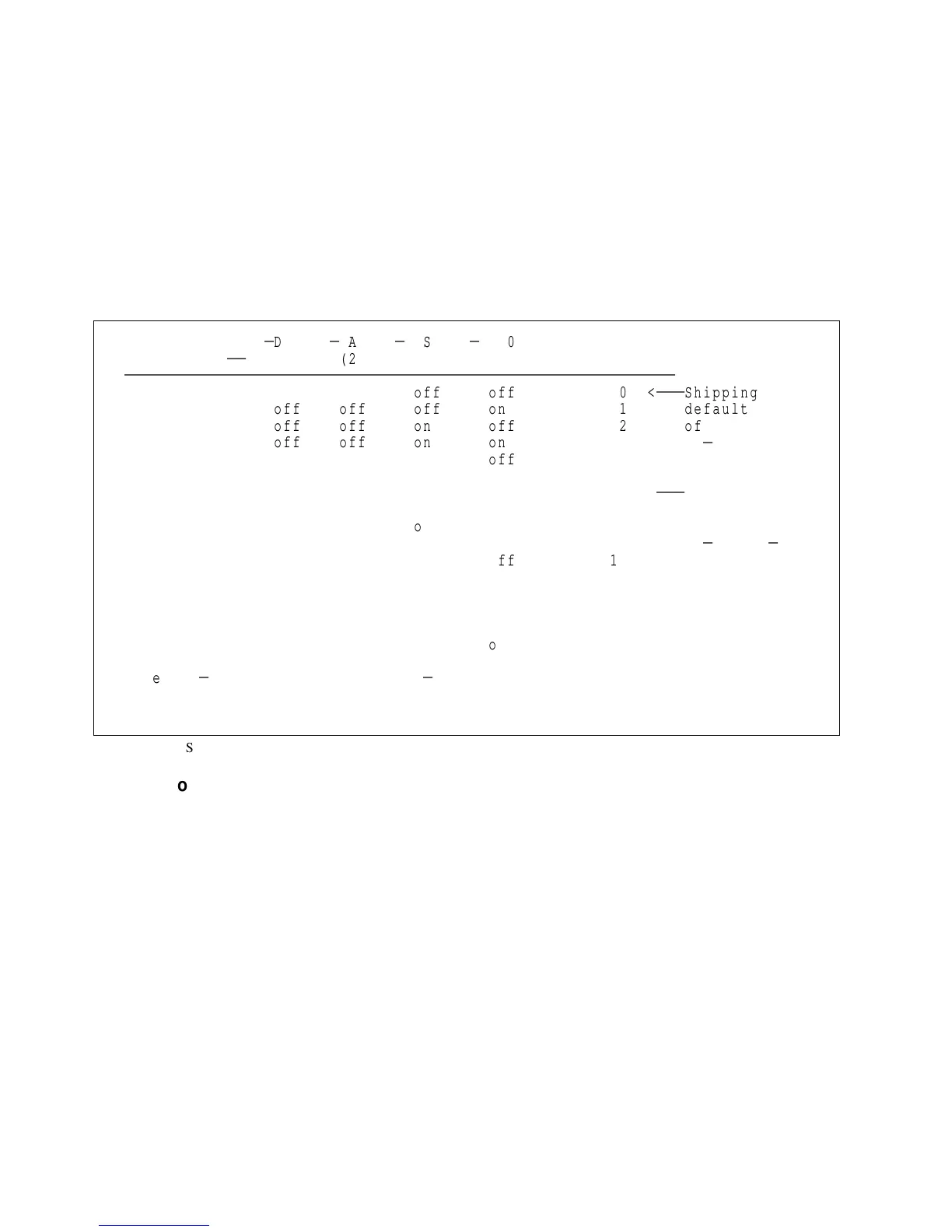6.2.1 Jumper Signal Description
Throughout this paragraph ON means a shunt jumper is installed and OFF means that no shunt jumper is
installed.
6.2.1.1 Device address select lines. (-DAS0, -DAS1, -DAS2, -DAS3)
These four lines defines DDRS-3xxxx device ID on the SCSI BUS. -DAS0 is the least significant bit and
-DAS3 is the most significant bit. Device ID is defined as follows.
Ä
DAS3
Ä
DAS2
Ä
DAS1
Ä
DAS0
Position #
ÄÄ
> (1) (2) (3) (4) Device ID
ÄÄÄÄÄÄÄÄÄÄÄÄÄÄÄÄÄÄÄÄÄÄÄÄÄÄÄÄÄÄÄÄÄÄÄÄÄÄÄÄÄÄÄÄÄÄÄÄÄÄÄÄÄÄÄÄÄÄÄ
off off off off 0 <
ÄÄÄ
Shipping
off off off on 1 default
off off on off 2 of
off off on on 3 80
Ä
pin
off on off off 4
off on off on 5
off on on off 6 <
ÄÄÄ
Shipping
off on on on 7 default
on off off off 8 of
on off off on 9 50
Ä
pin/68
Ä
pin
on off on off 10
on off on on 11
on on off off 12
on on off on 13
on on on off 14
on on on on 15
Note: 50
Ä
pin model does not use
Ä
DAS3, and only Device ID's 0 through 7
can be assigned.
Figure 23. SCSI Device ID
|
6.2.1.2 Position 5 on 50/68-pin models (Enable Auto Spin up)
| If a shunt jumper is installed, the drive will spin up automatically after power on reset. If shunt jumper is
| not installed, the drive will not spin up unless a START UNIT command is received.
| Note: The drive may not spin up while SCSI Bus is disconnected and internal terminator is disabled.
|
6.2.1.3 Position 5 on 80-pin models (Disable Auto Spin up)
| If shunt jumper is not installed, the drive will spin up automatically after power on reset. If a shunt jumper
| is installed, the drive will not spin up unless a START UNIT command is received.
|
6.2.1.4 Position 6 on SE models (SCSI Terminator ON)
If a shunt jumper is installed on 50/68-pin drive, the internal terminator on the drive works.
80-pin drive has not internal terminator.
|
6.2.1.5 Position 6 on LVD models (Force SCSI Single-End Mode)
| If a shunt jumper is installed, the drive is forced to work as Single-End mode drive.
32 OEM Spec. of DDRS-3xxxx

